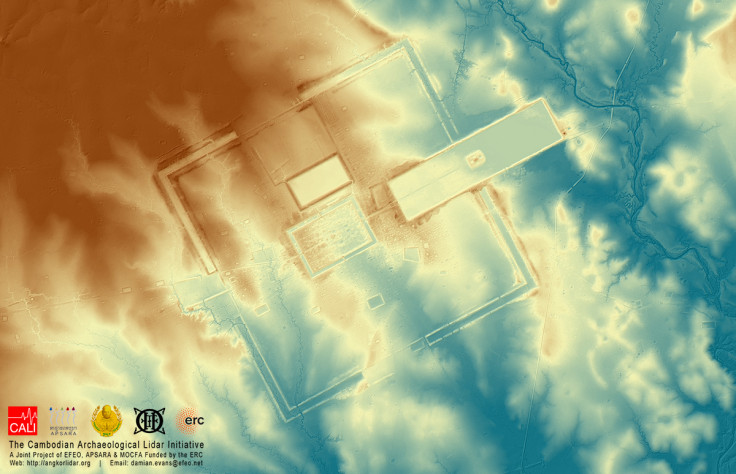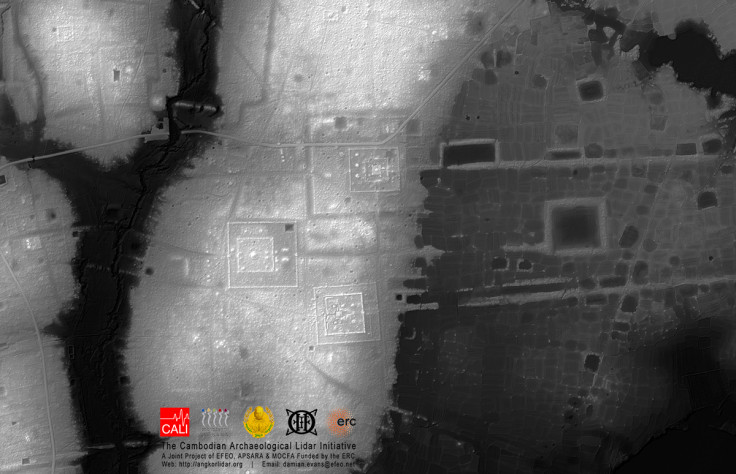Cambodia: Massive temple complexes and cities from Khmer Empire discovered

Ancient temples and sprawling city complexes belonging to the Khmer Empire have been discovered beneath Cambodia's jungle near Angkor Wat. Archaeologists used laser technology to peer beneath the dense vegetation to find temple complexes, intricate waterways, dams and engineered landscapes.
The findings, which shed light on the extent of the Khmer Empire 1,000 years ago, will be presented at a conference at the Royal Geographical Society in London and detailed in a study published in the Journal of Archaeological Science.
The Khmer Empire was established in Cambodia around 800 AD. It peaked between the 11<sup>th and 13<sup>th centuries, at which time it was the largest pre-industrial urban centre in the world.
The most famous monument to the empire is Angkor Wat, a huge temple constructed King Suryavarman II at the height of the empire's power.
However, archaeologists have long suspected there was far more to Angkor and its surroundings, and have been working to uncover its secrets for decades.
"We always imagined that their great cities surrounded the monuments in antiquity," Damian Evans, principal investigator of the Cambodian Archaeological Lidar Initiative told AFP.
"But now we can see them with incredible precision and detail, in some places for the very first time, but in most places where we already had a vague idea that cities must be there."
The research was the result of a joint project between the Cambodian Ministry of Culture and Fine Arts and APSARA, the Cambodian government's archaeological site management authority.

In 2012, the first survey using the lidar laser technology revealed a vast urban landscape in the sacred Kulen hills northeast of Angkor. It also showed medieval settlements that had extensive water management systems on a scale comparable to those found at Angkor.
In light of these findings, another far more extensive campaign was carried out last year. The latest scans showed even more temple complexes and cities, including those surrounding Banteay Chhmar, one of the most important but least understood sites from this period. They also found iron mining and smelting sites, with furnaces and mines that appear to have been turned into ponds.
The lidar scanning technology involves a special laser that can scan buildings, rock formations and other surface characteristics to create a 3D model. In the latest survey, the laser was mounted to a helicopter, which then scanned the landscape from above – looking through the dense foliage and trees to find man-made formations beneath.

"The lidar quite suddenly revealed an entire cityscape there with astonishing complexity," Evans said. "It turned out we'd been walking and flying right over the top of this stuff for 10 years and not even noticing it because of the vegetation. What we had was basically a scatter of disconnected points on the map denoting temple sites. Now it's like having a detailed street map of the entire city."
Researchers say their findings will give an unprecedented insight into the Khmer Empire at the height of its rule. Michael Coe, an anthropologist specialising in Angkor and the Khmer Empire, told the Guardian: "I think that these airborne laser discoveries mark the greatest advance in the past 50 or even 100 years of our knowledge of Angkorian civilisation."
Cathy Giangrande, the director of the Global Heritage Fund UK, which supports the project, said: "While tourists have for years flocked to well -known sites in South East Asia like Angkor Wat, we are only now beginning to comprehend the full extent of this site which has for many years lain hidden beneath the jungle.
"Banteay Chhmar, in particular, is one of the key sites of Khmer civilisation and through landmark work like that of Dr Evans' we are now able to not only place the site within its historical context but also ensure that it is preserved for posterity. Through our work in Cambodia, Global Heritage Fund UK has already trained over 60 local people to provide them the skills to manage this site and we now look forward to utilising Dr Evans' work to start the next phase of the project – including expanding offerings to visitors, such as cooking classes with the local villagers and guided tours to remote temples in the vicinity."
© Copyright IBTimes 2024. All rights reserved.







